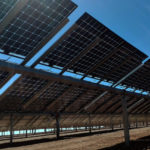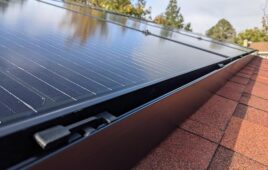Update 11/22/13: The temporary restraining order on the bifacial exemption repeal was extended until “December 5, 2019 or the date upon which this court rules upon Plaintiff’s motion for a preliminary injunction,” according to SEIA. December 5 is the date of the ITC’s midterm review of solar tariffs.
Update 11/15/19: The U.S. Court of International Trade temporarily halted the bifacial exemption repeal after Invenergy filed a complaint with backing from SEIA, according to Greentech Media. The repeal is now delayed until at least Nov. 21 or until a judge rules on Invenergy’s request for a permanent injunction.
Well, the fun lasted four months. After granting an exemption to the Section 201 tariffs in June of this year, the U.S. Trade Representative (USTR) has revoked the exclusion on all brands of bifacial solar modules. Bifacial imports will lose their exemption status starting Oct. 28, 2019.
![]() The USTR stated that it has evaluated the situation since the exemption was granted in June and determined that letting tariff-free foreign bifacial modules into the United States was undermining the objectives of the original safeguard measures.
The USTR stated that it has evaluated the situation since the exemption was granted in June and determined that letting tariff-free foreign bifacial modules into the United States was undermining the objectives of the original safeguard measures.
“After evaluating newly available information … that the exclusion will likely result in significant increases in imports of bifacial solar panels, and that such panels likely will compete with domestically produced monofacial and bifacial CSPV products in the U.S. market, the U.S. Trade Representative has determined, after consultation with the Secretaries of Commerce and Energy, that maintaining the exclusion will undermine the objectives of the safeguard measure,” the USTR said in a statement.
The utility-scale solar market was expecting a big swing into bifacial with the June tariff exemption. Wood Mackenzie Power & Renewables predicted a tenfold increase in global bifacial installations between 2019 and 2024, with a significant jolt from the U.S. market. WoodMac estimated 2 GW of bifacial installations in 2020 in the United States, fueled by the tariff exemption bringing “much-needed relief to the module supply chain.” The technology is still on the rise but now not as quickly as expected in the United States.
The original Section 201 tariff on imported solar panels currently stands at 25% and will drop to 20% in 2020. Still successfully exempt from the tariffs include certain modules using interdigitated back contact (IBC) technology. The Section 201 tariffs are up for a mid-way review this coming February, but it seems unlikely the entire situation be squashed after this bifacial U-turn.
SEIA’s President and CEO Abigail Ross Hopper released a statement about the decision:
“We’re obviously disappointed by USTR’s decision to revoke the bifacial panel exemption. USTR granted the exemption only four months ago, and only after a year-long process that included notice and comment and inter-agency review. In an extraordinary and unprecedented turn of events, the exemption was quickly rescinded without any opportunity for public notice and comment. This is unnecessarily squeezing the supply of panels in the United States, thereby inflating prices for consumers. In its rush to judgement, USTR missed an opportunity to address the significant shortage of domestic solar panels and its decision will slow the growth of an American economic engine. We look forward to making our case during the pending midterm review.”
We’ve been covering the affects of the solar panel tariffs since the beginning. Check out our recent news reports here, including the latest on tariffs on Chinese inverters, batteries and mounting system components.






Well done article